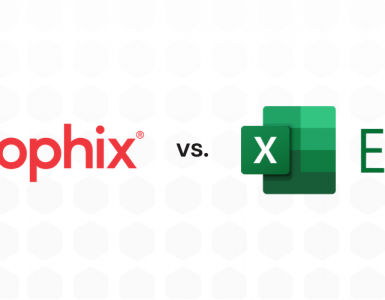
The State of Play
The last 20 years have seen a revolution in planning and analytics. Large and small organisations are replacing single user paradigms (typically Excel) with information-centric multi-user solutions. Thus allowing finance departments to manage their planning and analysis in a trusted, centralised and auditable way.
These solutions have been an ‘easy sell’ for vendors as planning cycles increased in complexity (and time) and the demands of internal and external reporting increased. However, these solutions have often ended up in silos in finance departments with little chance of breaking out. The better solutions were truly business-managed and finance professionals transferred their Excel skills to OLAP and ended up managing on their own, often with little reference to IT departments. There is an opportunity here for a little sharing of technology.
Opportunities
The technology that large and small companies have invested in is often powerful, sometimes massively so, and capable of much more than a monthly budget collection or actual/forecast reporting. After all, if you could do all of that in Excel to a degree; you probably did. You shouldn’t, but you could.
If you have already invested in a capable, multidimensional (OLAP) based solution, then what if you could also use that to model operations in detail? Take the detail level down to the SKU, product, service, employee, colour, size or day. In essence taking your most volatile P&L lines and analysing them in detail. Give yourself the chance to react to coming trends before they happen. What if you could join finance and operations together for a single true model of your organisation? There will be challenges, of course, but more of that later.
Operations
Operational Analytics is not a new concept, and it’s part of a complete CPM solution, but it has typically been lower on most companies’ priority list than Financial Analytics. It’s understandable; financial results need to be reported to stakeholders and regulators and the relentless cycle of financial planning and reporting leaves the finance team with little time to explore what else they could be doing with CPM.
Operational departments have very different needs. Though supplying financial plans and results to finance is key, they are more interested in the detailed planning of resources, product stock, employees, and looking for trends in product profitability, customer loyalty or other metrics. Whereas finance is content with asking “how are we doing” at a summary level, operations need to explore the “why” at the detailed level, with the ability to spot outliers in their data that would be lost in summarised information. Why is one product, service, division, customer, store or sales rep more successful, profitable, valuable than another? Can your business answer this question now? In time to adjust a plan?
Challenges
Moving from a purely financial analytics model to one that also encompasses operations will not be without its challenges; these are different solutions, with different needs, and different stakeholders.
- Finance Breakout – Finance solutions are often owned and run by finance. You will need to embrace buy-in from a wider group including operations and probably IT. You may want to consider a cross-functional Centre of Excellence approach supporting all Analytics in the business.
- The Data Challenge – Operational data will be an order of magnitude larger and more complex, and possibly less clean than you have now. It may come from many disparate systems and need IT support to gather together. But it will be worth it.
- Software Tools – If your current Financial Analytics solution is not class-leading, not OLAP-based, not standards-based, then it may not be able to cope with the extra demands and users. You’ll need support for many “dimensions” for analysis, support for larger numbers of users, data attributes, multiple hierarchies and more. A typical operational “cube” could have 20 dimensions for analysis and septillions (1024) of potential data points or more. I know, I’ve seen them.
Summary
If you’re an existing Financial Analytics user then assessing how using your current analytics investment to extend into Operational Analytics should be a given; hopefully, your choice of solution can support you. If it’s Prophix, it certainly can.
If you’re new to Analytics, then ask yourself which starting point – financial or operational – is likely to offer the best ROI. After trying to build an ROI fori financial plannng you may know the answer!
Coming Soon
This is the first in a series of blogs on this subject, soon to come will be more detail around the challenges and realities of implementing Operational Analytics in mid-market companies. So watch this space!






